April 2015. Winter has lingered on and on here near Washington, DC, and spring has been slow and reluctant. The National Cherry Blossom Festival is scheduled to end before the cherry blossoms even reach their peak bloom this year. And so I find myself dreaming not of cherry blossoms, but of whales in the desert in another April, many years ago. Gray whales, in their winter rendezvous in the Laguna San Ignacio, halfway down the Pacific Coast of Baja California. The images in my dreams emerge from memories of two visits to that place, the last ten years ago now. They leap and frolic in the moonlit waters, mating and giving birth, huge, happy, and safe.
The gray whale, Eschrichtius robustus, is a baleen whale that migrates along the Pacific Coast of North America from breeding grounds in Baja California to feeding grounds reaching Alaska and the Bering Sea. These whales travel a minimum of 5,000 miles in each direction, the longest annual migration of any mammal species. They are specialized for feeding in shallow coastal waters, compared to their other baleen whale cousins – blues, humpbacks, minkes, and others. Gray whales used to inhabit the Atlantic Ocean as well, migrating up and down both the North American and European Coasts – but those populations were driven to extinction by whaling by 1750. A tiny population is thought to be hanging on in the western Pacific between the Sea of Okhotsk and southern Korea.
Dick Russell, in Eye of the Whale, a wonderful personal account of the conservation of San Ignacio Lagoon and its whales, wrote: “I have come to see the gray whale as a kind of metaphor as we enter a new millennium, holding a mirror to a number of ecological, political, and social issues concerning our relationship to nature and particularly the oceans.” I agree.
Gray whales were nearly wiped out by whaling in the Pacific as well as in the Atlantic. In 1930, biologists estimated that only a few dozen survived. The first International Agreement for the Regulation of Whaling prohibited the killing of gray whales in 1937, and with protection, their population began to rebound. In 1995 they became the first whale to be removed from the U.S. Endangered Species List. The most recent estimate available from the National Oceanic and Atmospheric Administration (NOAA) is that there are now about 21,000 eastern Pacific gray whales migrating along our coast – not a huge population, but an ecologically-safe number.
Laguna San Ignacio was one of their last strongholds among the several breeding lagoons in Baja California that were attacked by American whalers. Charles Melville Scammon, a San Francisco-based whaler, was the first to penetrate this lagoon, somehow finding a route over the treacherous sandbars protecting its mouth in 1860, the year Abraham Lincoln was elected President. Within a few seasons it had been swept clean of whales. Scammon’s name was already attached to another gray whale breeding area about 80 miles north along the coast, then called “Scammon’s Lagoon,” and now known as Laguna Ojo de Liebre – Eye of the Jackrabbit Lagoon.
Scammon (1825-1911) was a contemporary of John Muir (1838-1914), and like many men of that era, he had a complex and somewhat conflicted view of American enterprise and its impact on American nature. Starting in 1869, he wrote seventeen articles for the San Francisco-based Overland Monthly, a popular travel and natural history magazine in which Muir also was published. In 1874 Scammon wrote a book,The Marine Mammals of the North-western Coast of North America, based on his close observations while hunting whales, elephant seals, and other marine mammals, and was elected to the California Academy of Sciences. Somehow the whaler was transformed into a whale scientist. Dick Russell writes in Eye of the Whale that “in eventually turning away from whaling, Scammon became an explorer, writer, and the foremost expert of his era on cetaceans of all kinds. I believe his personal metamorphosis marked the start of a shift in consciousness about the wondrous creatures who inhabit our oceans.”
A little more than a century after gray whales were nearly wiped out in San Ignacio Lagoon, word began to spread that fishermen there had started to encounter “friendly” whales, which approached their boats and seemed to want to be stroked and petted. The first of these encounters is said to have been in 1972 with a San Ignacio fisherman, Patricio Mayoral. Dick Russell calls these first encounters the whales’ “decision to make contact with our species.” Soon curious scientists and tourists began coming to Laguna San Ignacio to see the mother whales who approached boats to be touched and to introduce their newborn calves.
What the “friendly whales” story shows quite clearly is that the decimation of the gray whales of Laguna San Ignacio was so sudden and rapid that there was no time for natural selection and evolution to shape their behavior toward humans. There are many examples in which prey species, hunted over a long period of time by either human or non-human predators, have evolved an innate fear of those predators. Not so with these whales. Whales born only a few generations since their ancestors were slaughtered by Scammon’s men at Laguna San Ignacio exhibited no intrinsic fear of people in boats, and instead seemed to be innately curious about them.
Some people immediately interpreted this “friendly” behavior as the whales trying to communicate with us. Other people criticized that interpretation, saying that the idea of whales feeling “friendly,” human-like emotions, or even curiosity, is “anthropocentric” – that is, that it projects human emotions onto non-human animals, with the implication being that they could not possibly feel such emotions. For me, it is practically the opposite: imagining that whales and other non-human animals don’t have a rich emotional repertoire is what is anthropocentric. It is the equivalent of the southern slave owners of Scammon’s day imagining that slaves didn’t have real emotions.
In 1971 the Mexican Government created a gray whale reserve in Laguna Ojo de Liebre – “Scammon’s Lagoon” – and in 1972 decreed that Laguna San Ignacio was to be protected as a “Reserve and Refuge Area for Migratory Birds and Wildlife.” That was the same year fishermen began meeting the friendly whales. In 1988 the El Vizcaíno Biosphere Reserve, a vast swath of desert land encompassing San Ignacio and Ojo de Liebre Lagoons and their gray whale breeding and calving grounds, was established. This reserve is said to be the largest protected area in Latin America at almost 25,000 square kilometers. In 1993 Laguna San Ignacio and Laguna Ojo de Liebre were also listed as a UNESCO World Heritage Site, called the Whale Sanctuary of El Vizcaíno. Now not only were the whales protected as a species, but their critical breeding and calving area also was protected at the highest international levels.
Or was it? In the early 1990s, Japan’s Mitsubishi Corporation, which owned a controlling interest in the giant solar-evaporation salt works in Laguna Ojo de Liebre, put forward a proposal to expand salt production into the Laguna San Ignacio. A heated environmental debate ensued, lasting for nearly a decade. A long list of international conservation organizations lobbied the Mexican Government in opposition to the Mitsubishi plan. Finally, in early 2000, Mexican President Ernesto Zedillo announced that the salt industry would not be allowed in the Laguna San Ignacio. Some people saw a parallel with John Muir’s fight to protect the Hetch-Hetchy Valley in Yosemite National Park from damming – that battle was lost, but the fight over San Ignacio Lagoon had been won.
I visited Laguna San Ignacio twice – in the early spring of 2004 and again in 2005. On those two visits we stayed first at a small, simple guesthouse in the town of San Ignacio before going on to Laguna San Ignacio. A river flowing down from volcanic mountains to the east, and emerging as springs, creates this oasis in the Vizcaíno Desert. A grove of date palms, introduced by Jesuit fathers who founded the Misión San Ignacio in 1728 at the site of an indigenous Cochimí settlement, sprawls along the river. The palms seem to be mostly naturalized and self-propagating here now.
On the pink adobe wall of the courtyard of the guesthouse, in fading paint, was written:
“San Ignacio, comanance de arena,
donde rie la pena
y suspira el amor.”
Juanita, the owner of the place, tried to look up “comanance” in a big Spanish-English dictionary for me, but the word wasn’t there, and so the meaning of the phrase on the wall remained a bit mysterious. Years later, when she had the words on the wall restored and repainted, she discovered that the “o” was really an “a” that had lost its “tail” – it was “camanance de arena,” and she emailed me immediately with the news. That made sense:
“San Ignacio, a dimple in the sand,
where trouble laughs
and love sighs.”
I remember one warm, sunny morning, in the middle of the lagoon just off of the Kuyima camp, when a female and her calf approached the boat and lingered a long time. Everything seemed so calm, and time stretched into delight. But the whales seemed to be in control of the interspecific communication and contact. It was not our choice. Another day our boatman crisscrossed back and forth for hours in the lower estuary, where we could see the breakers on the sandbars Scammon had conquered, and although we saw whales blowing all around, and lots of mothers and calves at a distance, none chose to approach us that morning.
It was a strange feeling to have a sense of being chosen by a mother whale to be introduced to her calf. And equally strange to feel that despite our strong wish to be approached, if no females chose to approach us we just had to wait. And then… in the exciting, ephemeral moment when a mother and calf did head for our boat, passing underneath, rising, and maybe gently bumping the boat’s bottom and giving us a breath-catching moment, maybe lingering alongside to be rubbed and petted, the wonder at “why”? Why did this whale and her baby come up to us now?
Oh whale, can you feel whether
My heart is proud, or pure? Whether
I feel I deserve to touch you, or
am simply amazed at such a generous gift?
And that obvious, felt lack of control somehow created a feeling that here I had encountered another self-realized being, equal to me or to any human. A fellow-being with whom we share the Earth – yet somehow of a different world. It held a powerful arcing of spiritual power, this encounter with another equally-valid “presence” of being, but of non-human being. The Laguna San Ignacio simultaneously shrinks to a self-contained world of immediate power and expands to a stage for a dialogue of existential significance.
Oh whale, where are the secret
worlds mapped on your broad back?
Deep below the waves where I float,
or among the galaxies of plankton?
Echoing in my dreams of whales in the desert is a poem, “El ojo de la ballena” by Homero Aridjis, one of Mexico’s greatest poets and environmentalists – in English, “The Eye of the Whale” – which he wrote after a trip to the Laguna San Ignacio in 1999. In 1985 Aridjis founded and led the “Group of 100,” an association of prominent artists and intellectuals, including Octavio Paz, Juan Rulfo, Rufino Tamayo, Gabriel Garcia Marquez, and others, devoted to environmental protection and the defense of biodiversity in Mexico and Latin America. The Group of 100 was responsible for an official decree in 1986 that ensured protection for the forests in Michoacán where migratory monarch butterflies overwinter. Aridjis also led the defense of San Ignacio Lagoon against the expansion of the Mitsubishi salt works.
Aridjis’s poem “El ojo de la ballena” starts with a reference to the Bible, Genesis I, 21, included in the title. Here are a few selected stanzas from the poem, en español, then with English translation:
Y Dios creó las grandes ballenas
allá en Laguna San Ignacio,
y cada criatura que se mueve
en los muslos sombreados del agua.
And God created the great whales
there in Laguna San Ignacio,
and each creature that moves
in the shadowy thighs of the water.
Y Dios vio que era bueno
que las ballenas se amaran
y jugaran con sus crías
en la laguna mágica.
And God saw that it was good,
that the whales made love
and played with their young
in the magical lagoon.
Y las ballenas salieron
a atisbar a Dios entre
las estrías danzantes de las aguas.
Y Dios fue visto por el ojo de una ballena.
And the whales came out
to catch a glimpse of God
among the dancing waves.
And God was seen through the eye of a whale.
And the final stanza:
Y las ballenas llenaron
los mares de la tierra.
Y fue la tarde y la mañana
del quinto día.
And the whales filled
the oceans of the earth.
And it was the afternoon and the morning
of the fifth day.
What is so very interesting to me is that Aridjis deliberately ends the poem on the Fifth Day. So very telling because, according to Genesis I, 27-28, on the Sixth Day of creation: “… God created man in his own image, in the image of God created he him; male and female created he them. And God blessed them, and God said unto them, Be fruitful, and multiply, and replenish the earth, and subdue it: and have dominion over the fish of the sea, and over the fowl of the air, and over every living thing that moveth upon the earth.”
And thus “man”, created in the image of the god of Genesis, slaughtered the great whales his maker had supposedly created, and rendered their oil for lamps, almost causing their extinction in his supposed right and duty to subdue the Earth and have “dominion” over all its creatures.
By ending his poem on the Fifth Day, Aridjis gives away his true opinion of man, and god. Causing the near-extinction of the great whales was the hubris of our species, and not the preference of the “god” the whales saw dancing among the waves, Homero Aridjis says to us.
In the Laguna San Ignacio the whales are breaching and splashing in the constellations of their ocean galaxies. They are diving and playing in the deep waters of my dreams. They are calling me back. Through their eyes they see god dancing among the silver waves, and I am drawn to join them there in that world of the Fifth Day, a world that precedes my own species. Maybe there in that “camanance,” that dimple – in the sand, in the ocean, in the ocean of time – I can finally try to understand how we can reconcile the Sixth Day with all the other days, and transcend it to return to an Earth with a harmony of species, none with dominion.
Related links and sources:
- Eye of the Whale: Epic Passage from Baja to Siberia, by Dick Russell. 2001.
- El Vizcaíno Biosphere Reserve
- Sebastián Vizcaíno
- Whale Sanctuary of El Vizcaíno – UNESCO World Heritage Site
- Homero Aridjis
- El ojo de la ballena (Génesis, I, 21), The Eye of the Whale, poem by oHomero Aridjis

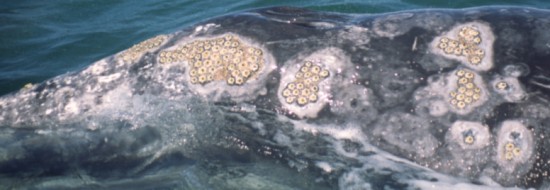
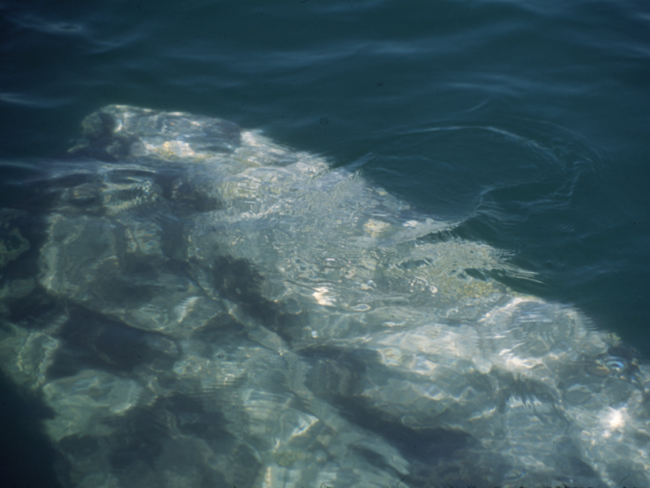
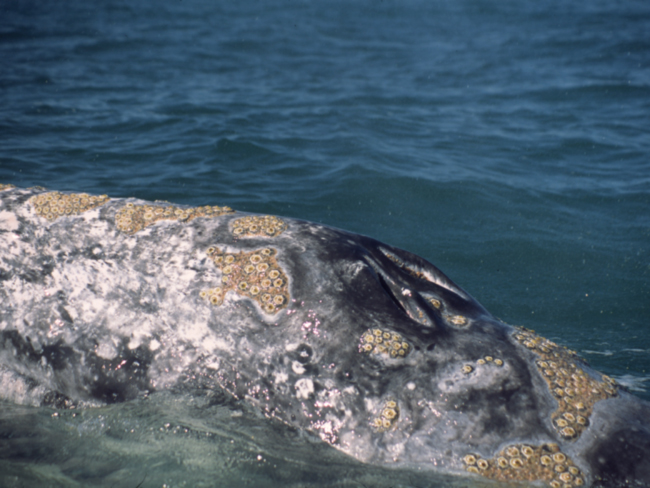
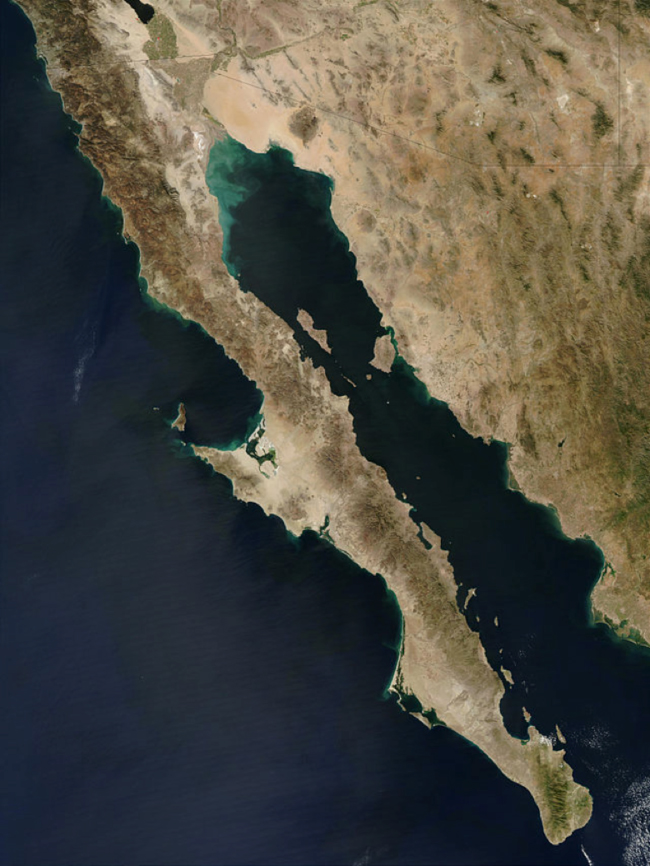
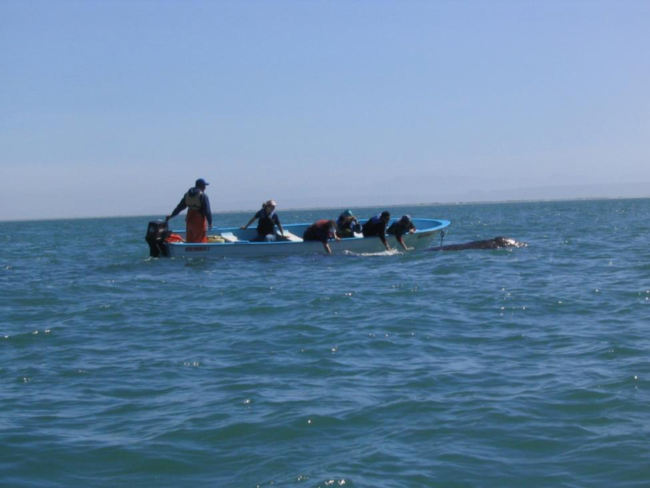

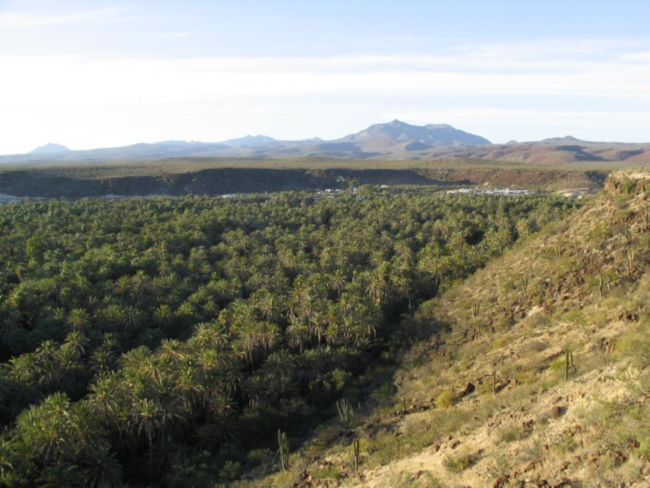
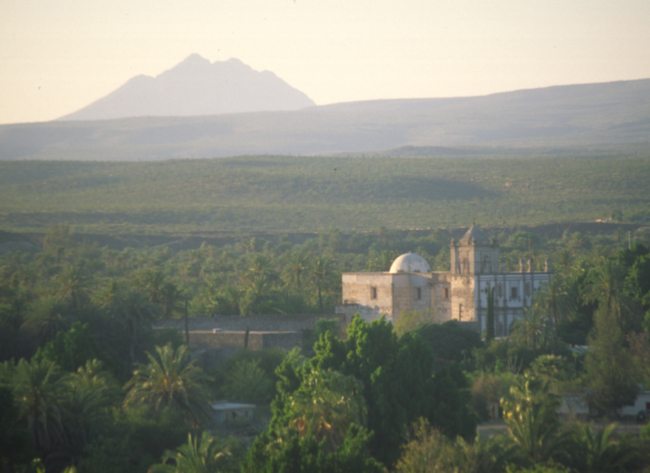

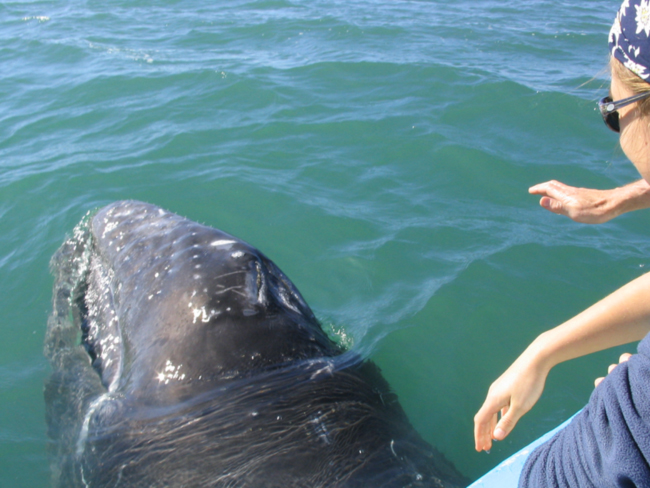
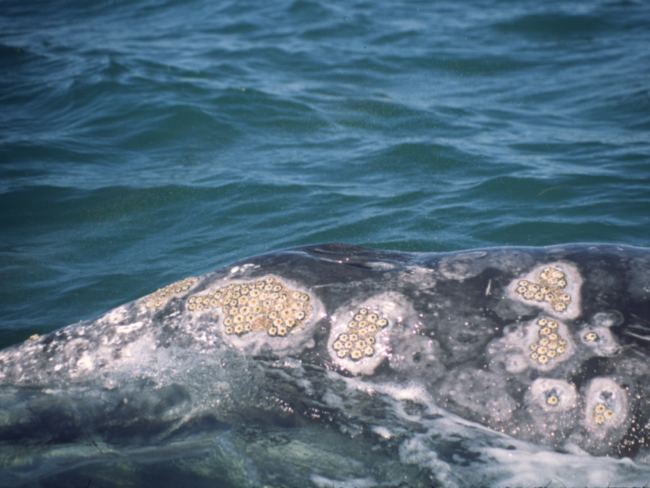
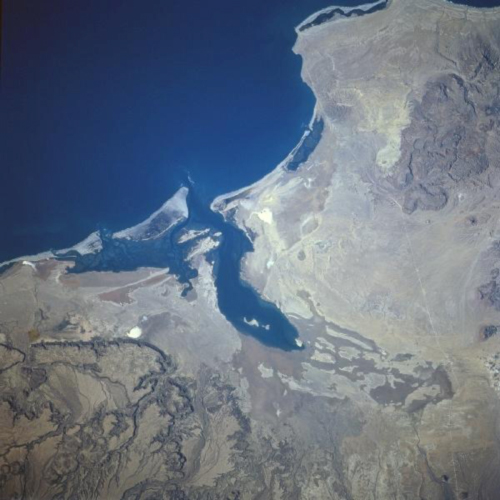



April 18, 2015 12:32 am
I don’t know if you received my initial reaction to this piece Bruce, it disappeared before I ‘submitted’. Please know though that it absorbed and elated me like no other of yours, it’s genius.
I’m grateful for your profound insight into worlds that most of us can barely imagine exist, let alone discover, interpret and communicate to others in ways that matter, thanks so much for that. Louise
April 21, 2015 1:18 am
Bruce, you are an incredible Writter of nature and a great friend. Thanks for all the articles you had written an sended me, I have a grate collection and feal proud of each one of then, not to many people have the oportunity to have such a great friend.
Disculpa mi ingles, pero me siento muy orgulloso de ser to amigo.
Victor